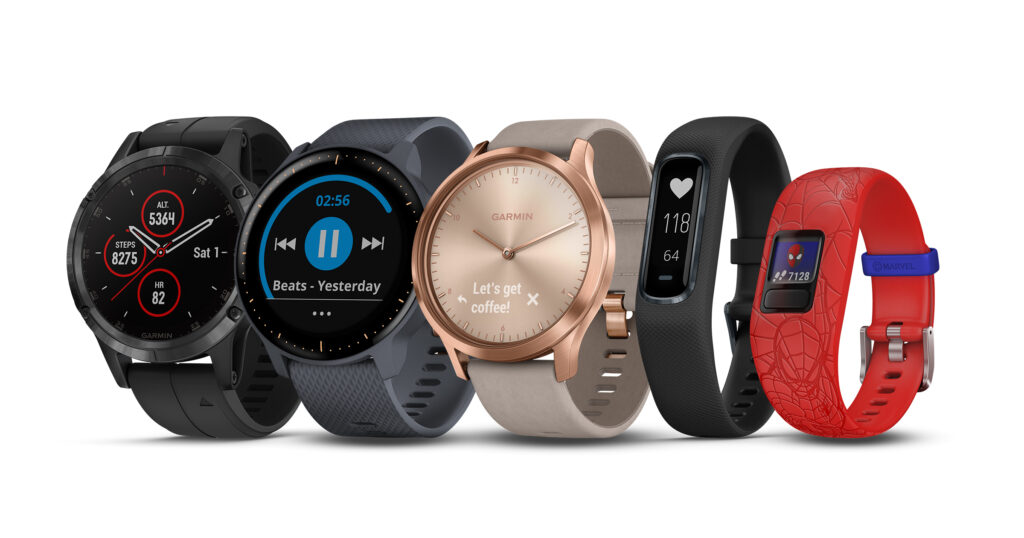-
Getting Started
-
Garmin Devices
-
Setup
-
Manage
-
Data Collection
- Collect Data: Synchronization Types
- Collect Data: Tablet Sync (multi-sync) with "Fitrockr Hub (Multi-Sync)" app
- Collect Data: Smartphone Sync (single-sync) with Garmin Connect app
- Collect Data: Overview
- Collect Data: Smartphone Sync (single-sync) with Fitrockr app
- Collect Data: Sync via USB cable to Laptop
-
Track
-
Analyze
-
Other
-
Trouble Shooting
-
Definitions
-
FAQ
Compatible wearables: select the right device for your research, healthcare or patient monitoring project

Each project comes with specific needs in regards to budget, data collection, battery duration, storage capabilities and device handling. The wide range of wearables provided by our partner Garmin supports any study needs.
Identifying the best device should be based on the following criteria:
(1) Budget
(2) Data Types
(3) Battery Duration
(4) Synchronization Scenario
(5) Participant Types
(6) Data Validity and Accuracy
Selection Criteria #1: Budget
This one is straight forward. Define the max budget you can spend on devices and calculate how many devices you need based on your project setup and target group. Keep in mind that devices can be shared amongst users; i.e. once the data collection is completed for a participant, device can be passed onto the next participant. If your project setup allows, you do not need as many devices as you have participants.
Customers often ask us how many devices should be planned in that need replacement. We can tell you that in the last hundred projects, not a single Garmin device broke by itself. Devices only had to be replaced because kids were damaging them through play or (some high end pricy) devices got “mysteriously lost”.
Selection Criteria #2: Data Types
The data to be collected during the project can strongly influence the device needed. For instance, all device models are able to record activities, steps, distance and other basic data but only specific models will provide respiration, accelerometer, gyroscope or health snapshots.
Our compatible wearables overview provides a high level list of data types supported by each device model.
Selection Criteria #3: Battery Duration
Regularly charging a device can be a barrier and potential source of data loss in a project, particularly when dealing with participants that are first time wearable users or that mentally/physically struggle to conduct a regular charging task. The Fitrockr platform provides push notifications to remind participants but it may be a good idea to select a device based on battery criteria.
Garmin devices come with a battery duration ranging from several days to several months before they need to be charged. Some project setups may benefit from selecting a device that does not need to be charged at all during the data collection. Our compatible wearables overview provides a high level list of battery durations by each device model.
Selection Criteria #4: Synchronization Scenario
The fourth criteria to select a device should be based on the synchronization scenario. The key question to be answered is how often participants are able to synchronize. Will participants be able to synchronize the Garmin device with their own smartphone every day or will they wear the Garmin device for a longer period of time (weeks, months) before it gets synchronized.
The longer time between synchronizations, the more device storage capacity is required. Garmin device models range from a few MB to several GB of data storage.
We ran a few tests on storage capacity needs. You can find the results at our blog post Select the Right Device: Garmin Device Storage Test.
Selection Criteria #5: Participant Types
The fifth criteria deals with the participant types. Specific participant types or groups may come with special needs derived from their age or physical/mental abilities. Kids, some elderly or some handicapped participants may require a device with simplified usability (e.g. small vs large display, feature-rich vs simplified functionality) and reduced/no need to regularly charge or synchronize.
Selection Criteria #6: Data Validity and Accuracy
Last but not least, data validity and accuracy is very important. The good news is that all Garmin models compatible with Fitrockr provide very high data validity and accuracy to ensure that project targets are achieved.
Garmin is continuously improving and evaluating their devices’ data validity and accuracy. Results can be viewed at Garmin Health – Third Party Studies Overview
Conclusion
The wide range of compatible Garmin devices that can be used with the Fitrockr Health Solutions platform will cover any project need. We recommend to consult Garmin and us before selecting a device model for your project. We are happy to support you finding the best device for your specific needs.